Krzysztof Wodiczko, contributors: Rosalyn Deutsche, Lisa Saltzman, Andrzej Turowski, Dick Hebdige, Denis Hollier, Ewa Lajer-Burcharth and Dora Apel (available on amazon USAand UK.)
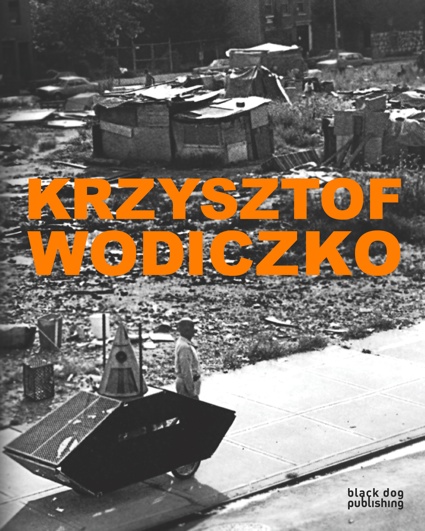
Publisher Black Dog says: Krzysztof Wodiczko is the first complete collection of the politically charged installations and projects of internationally renowned artist, Krzysztof Wodiczko.
Wodiczko is best known for his large-scale and video projections on buildings and monuments. Since the 1980s, he has been transforming the facades of official buildings and historical monuments into temporary spaces for critical reflection and public protest.
Krzysztof Wodiczko covers 40 years of the artist’s extensive, and often controversial, body of work using contemporary technologies to form a commentary on politics, ethics, social responsibility and the urban experience. Comprising a collection of writing by some of the most critically acclaimed art historians, cultural theorists and commentators working today, along with both previously published and unpublished texts by Wodiczko himself, this book is the definitive study of the artist’s work. Richly illustrated, the book includes a diverse selection of images, ranging from digital montages and preliminary visualisations to sketches and photographs.
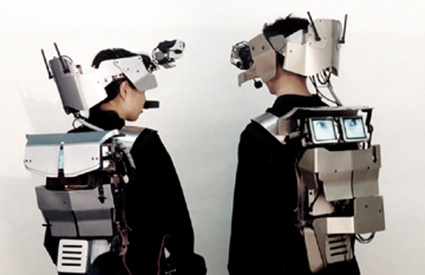 Dis-Armor Project, 1999-2001
Dis-Armor Project, 1999-2001
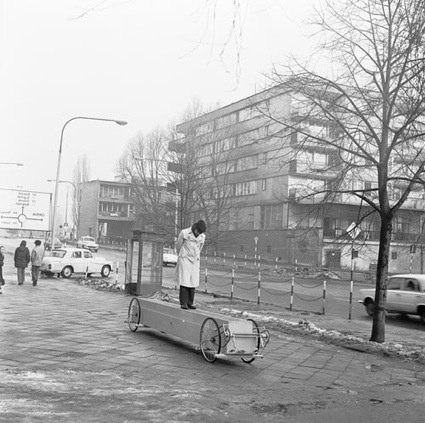 Vehicle (Pojazd), 1971-1973
Vehicle (Pojazd), 1971-1973
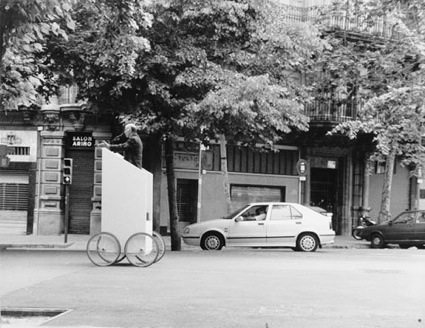 Vehicle-Podium, 1977-1979
Vehicle-Podium, 1977-1979
If there’s one artist whose innovative and socially-engaged work never ceases to impress me it’s Krzysztof Wodiczko. Not even his ‘oldest’ pieces have suffered from the passage of time. They are still as relevant as ever, even if the context has changed. His 1969 Personal Instrument, for example, consisted of a microphone, worn on the forehead, which retrieved sound from the environment while photo-receivers in gloves filtered the sound through the movement of the hand: closing the hands suppresses the sound, turning the hands to face the light opens up the sound channel, the photoreceivers on the right hand control the low-pitch filter and the ones on the left hand control the high-pitch. The resulting sound was perceived by the artist only through his headphones. By emphasizing selective listening, vital to a Polish citizen’s survival at the time, Wodiczko intimated the prevalence of censored speech, registering “dissent of a system that fostered only one-directional critical thinking – listening over speech.” (Source: wikipedia.)
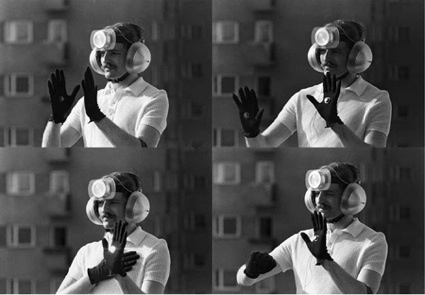 Personal Instrument, 1969
Personal Instrument, 1969
Wodiczko’s projections and instruments reinstate the city as a space for discussion, relentless questioning and debate. Therefore Krzysztof Wodiczko is not only a monograph on the artist’s work, it is also a book that offers readers the opportunity to reflect upon the unresolved and under-discussed issues that the artist’s projects engages with: post-war trauma, plight of illegal immigrants, exclusion of homeless people from society, industrial pollution, profit-making real-estate redevelopment that forces poor residents to move away, gun violence, etc. It is also one of the rare books i feel like recommending to artists, activists and designers alike.
Presentations of the artist’s individual artworks alternate with essays by Professors of Art History, Contemporary Art, of Architectural Theory as well as art critiques and curators that focus on particular aspects of Wodiczko’s work and life: the political and artistic context of Poland from the 1950s till the 1980s, New York’s urban redevelopment programme which involved raise in property value and displacement of the lower income population, urban guerrilla warfare, issues of identity, etc. Along with the texts by the various contributors, the study contains also excerpts from conversation the artist had with art critiques or homeless people, a selection of his own essays, chapters from exhibition catalogues and other original documents.
I’m sure many of you are familiar with his work but for my own pleasure, here’s a couple of works i discovered or re-discovered in the book:
Homeless Vehicle Project provides homeless people with a mobile tool that responds to their basic needs (living, sleeping and washing) but also assists them in their ‘daily job’ as collectors and resellers of discarded cans and bottles. The vehicle was not designed as a solution to their housing problem, but it rendered visible to passersby the invisible: the hundred of people compelled to ‘sleep rough’ on the streets of New York City.
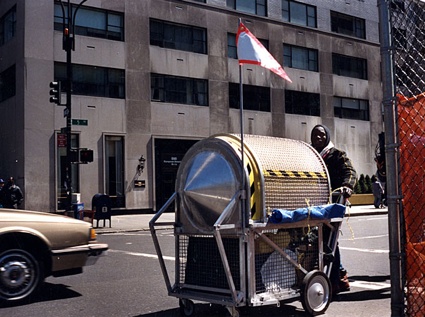 Krzysztof Wodiczko, Homeless Vehicle Project, 1988
Krzysztof Wodiczko, Homeless Vehicle Project, 1988
While he was in London for a commissioned projection in Trafalgar Square, Wodiczko decided to react to what he was reading in the newspapers: racial violence in South Africa and Thatcher government’s refusal to apply economic sanctions against apartheid. Since the South Africa House, was mere steps away from the Nelson Column, the artist projected a Nazi swastika on the facade of the building, establishing an uncomfortable parallel between the racist policies of South Africa and that of Hitler’s Germany.
South African officials contacted the police who put a stop to the projection after only two hours.
![0Wodiczko_Projection-SAfrica[1].jpg](http://www.we-make-money-not-art.com/wow/0Wodiczko_Projection-SAfrica%5B1%5D.jpg) Projection on the South Africa House, London, 1985
Projection on the South Africa House, London, 1985
The projection of a cruise missile on the cliffs above Bow Falls, in Banff National Park in Alberta echoed protests that rose across Canada when it emerged that Alberta had been selected as a location for testing U.S. cruise missiles in the country.
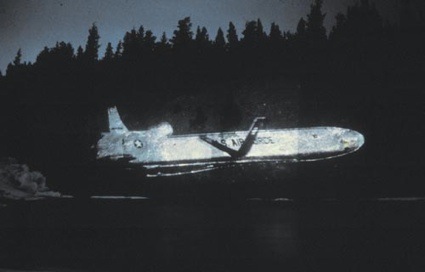 Bow Falls, Banff, Alberta, 1983
Bow Falls, Banff, Alberta, 1983
Black Dog Publishing also has an art gallery by King’s Cross St Pancras’ station. They have recently opened the exhibition Krzysztof Wodiczko: The Abolition of War. It will remain on view at the WORK Gallery in London though 14 January 2012.
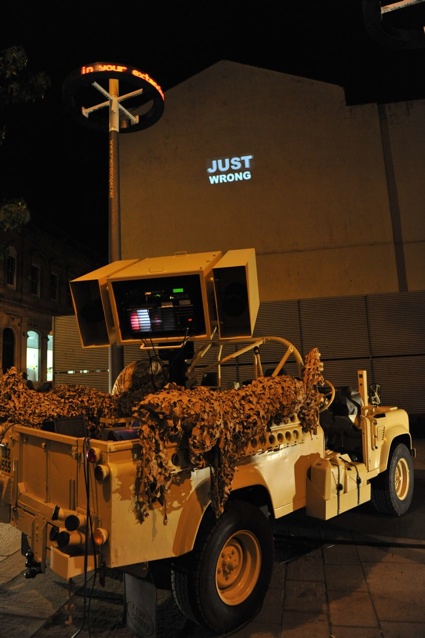 Krzysztof Wodiczko, War Veteran Vehicle, 2009
Krzysztof Wodiczko, War Veteran Vehicle, 2009
